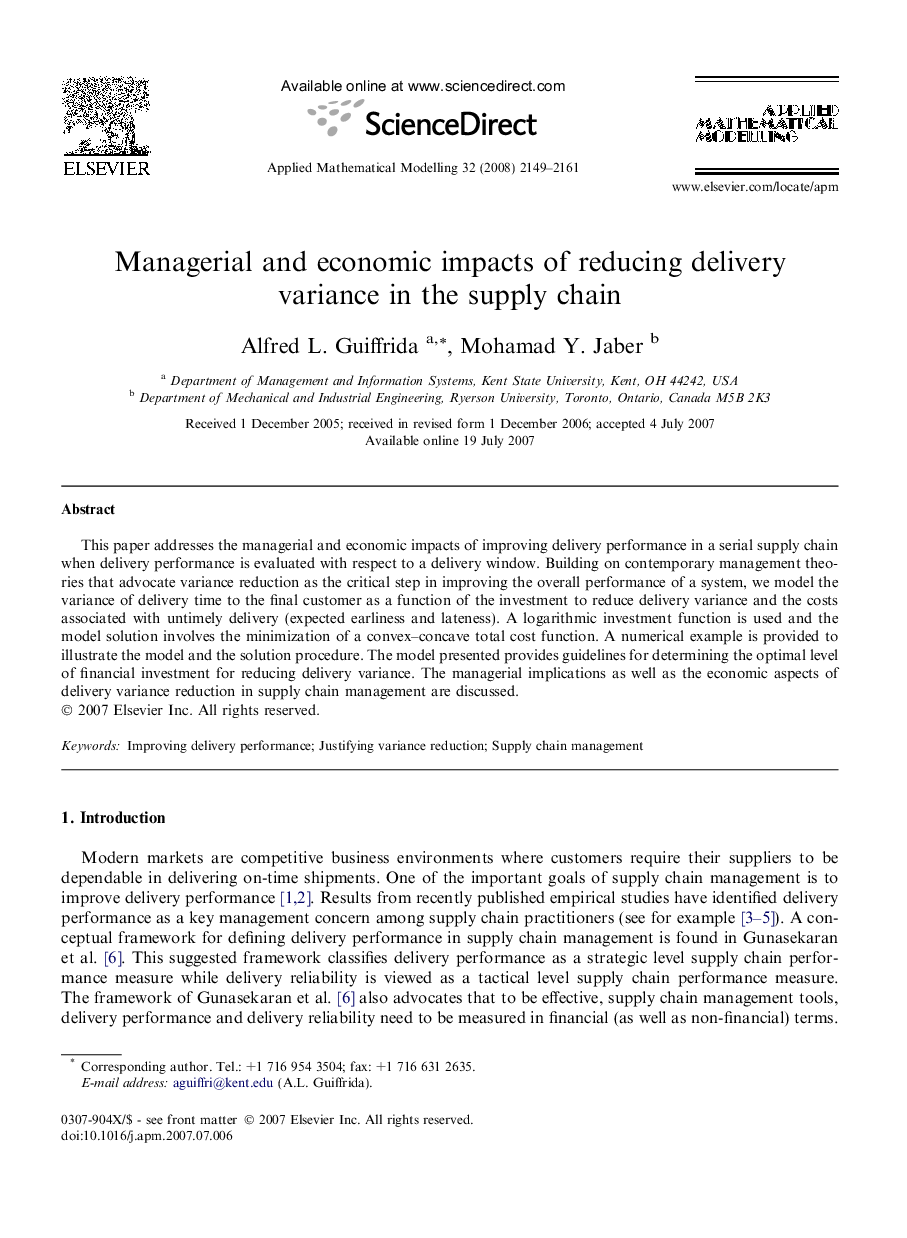| Article ID | Journal | Published Year | Pages | File Type |
|---|---|---|---|---|
| 1706451 | Applied Mathematical Modelling | 2008 | 13 Pages |
This paper addresses the managerial and economic impacts of improving delivery performance in a serial supply chain when delivery performance is evaluated with respect to a delivery window. Building on contemporary management theories that advocate variance reduction as the critical step in improving the overall performance of a system, we model the variance of delivery time to the final customer as a function of the investment to reduce delivery variance and the costs associated with untimely delivery (expected earliness and lateness). A logarithmic investment function is used and the model solution involves the minimization of a convex–concave total cost function. A numerical example is provided to illustrate the model and the solution procedure. The model presented provides guidelines for determining the optimal level of financial investment for reducing delivery variance. The managerial implications as well as the economic aspects of delivery variance reduction in supply chain management are discussed.
